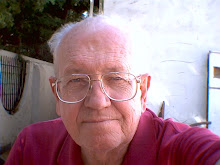The Great Society
Chapter 3 Bye-Bye Sweet Liberty describes events that I witnessed firsthand as this country flipped from being conservative to liberal. From a sociological standpoint, these changes can be described as:
A shift from an open society to a top/down structured society.(Sometimes called an Organized Society, or a closed society)
A shift from individualism to collectivism.
The way it was sold to us at the time, was that we were being delivered from our rustic, outdated, unjust roots and being put into the new and wonderful Great Society: the latest thing in the way of civilization. The president at the time was Lyndon Johnson. He announced his vision of the Great Society in a speech at the University of Michigan in 1964, but the actual reforms were not put into law until after the 1966 election. Such a society would result from a series of programs that were to be funded and directed from Washington. The programs were to be aimed at education, poverty, cities and the environment. All these programs were to be established as legal (political) programs, not economic programs (Political efforts differ sharply from economic efforts. The political approach relies on law. The economic approach relies on knowledge and effort, extracting something from our brains, or from our surroundings. (See Chapter 10. Economics versus Politics.)
Rather than move the United States forward, improving the already good direction in which the country was headed, this was a move backward, down a road traveled by previously wrecked civilizations. This was déjà vu all over again.
In the months that followed Johnson’s announcement, it became evident that the federal government was taking on duties unheard of in peacetime. Levels of federal taxation were increased sharply. Some taxes which had belonged to states were assumed by the federal government with the promise that the money would be returned in new programs. The federales said they didn’t want the states frittering away precious tax money on unimportant programs. “We will make sure the money will go where it is most needed.”
This, of course, was a giant power grab that has never been reversed.
The designers of our country (the Founders) would have been appalled. They spent many hours debating and years writing letters devising methods of keeping federal powers in check. They understood perfectly well that centralization of power is the greatest threat to liberty. They knew that centralized power is a characteristic of the closed society; i.e., a dictatorship or a monarchy. They knew that, though a closed society is more orderly, that freedom is sacrificed for order. They specifically rejected order for freedom. Benjamin Franklin stated:
“Those who would give up an essential liberty for temporary security, deserve neither liberty or security.”
They knew that, by putting the bulk of governmental duties on each state, a competitive situation would exist between states and comparisons between different approaches of governance could be made. Each state would be a laboratory of Politics. The state governments, in turn, would delegate duties to counties, townships, cities and towns. Power was to be dispersed not concentrated. The 10th Amendment of the Constitution says:
The powers not delegated to the United States by the Constitution, nor prohibited by it to the States, are reserved to the States, respectively, or to the people.
In other words, the federal government had certain, limited powers, the states and the individuals had everything else. No wonder the business of the federal government was conducted from a few small buildings for the first century of its existence.
Even the ancient Greeks knew that personal freedom can only exist in the tumult that corresponds to an open society. The designers of the United States were well instructed in Greek and Roman history.

No comments:
Post a Comment